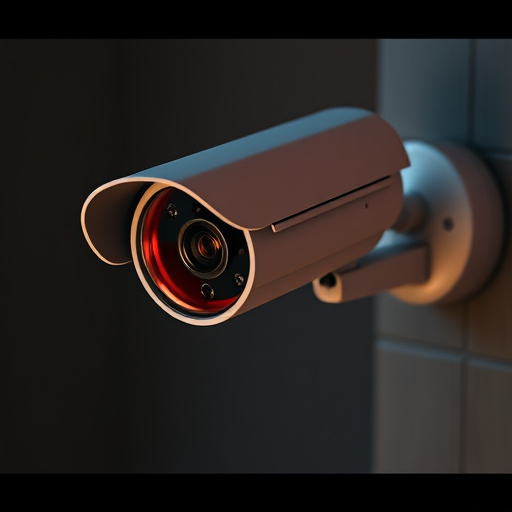Mounting fake security cameras offers a cost-effective, DIY solution for enhancing home or business security. Consider realism levels, mounting options, and strategic placement for optimal deterrence. Ensure legal compliance by checking local regulations and avoiding hazardous areas. Regular maintenance is key to keeping these safety aids functional and effective. Learn how to mount fake security cameras effectively with our simple guide.
Deter crime and protect your property with the strategic placement of fake security cameras. These realistic simulations offer a cost-effective alternative to real surveillance systems, providing peace of mind without breaking the bank. In this guide, we’ll explore how to mount fake security cameras effectively, from understanding their benefits and choosing the right model to legal considerations and practical safety tips. Learn the art of integrating these decoys for maximum security.
- Understanding Fake Security Cameras and Their Benefits
- Choosing the Right Fake Camera for Your Needs
- Mounting Techniques: A Step-by-Step Guide
- Legal Considerations and Safety Tips
Understanding Fake Security Cameras and Their Benefits
Fake security cameras, also known as mock or dummy cameras, offer a creative and cost-effective solution for enhancing home or business security. These devices provide a visual deterrent to potential intruders by simulating the presence of active surveillance. One of the key benefits is their ease of installation; they can be strategically placed without the need for complex wiring or professional setup, making them an accessible option for DIY enthusiasts.
Mounting fake security cameras is a straightforward process. Users typically attach the camera to a visible location, such as a wall or ceiling, ensuring it appears realistic. The simulated wiring adds to the illusion, giving the appearance of a fully functional security system. This method is particularly useful for individuals seeking an affordable way to improve their property’s safety without investing in extensive surveillance infrastructure.
Choosing the Right Fake Camera for Your Needs
When selecting a fake security camera, consider your specific needs and preferences. Different models offer varying levels of realism, from basic plastic replicas to highly detailed imitations with advanced features. For instance, if you’re aiming for an inconspicuous setup, opt for a camera that blends seamlessly with its surroundings, whether it’s a plain design or one that mimics popular security camera aesthetics.
The mounting process is another crucial aspect. Some fake cameras come with adhesive strips for easy DIY installation, while others may require drilling and wiring, just like real security systems. Choose a model that aligns with your skill level and desired setup complexity. For a simple, hands-off approach, consider wireless options; for more intricate installations, explore models that allow for customized wiring and positioning.
Mounting Techniques: A Step-by-Step Guide
Mounting a fake security camera with simulated wiring can be a straightforward process, allowing you to create a convincing visual deterrent for potential intruders. Here’s a step-by-step guide on how to mount these devices effectively:
1. Choose Your Location: Select the spot where you want to install your fake camera. This could be an exterior wall, a ceiling, or any surface that offers a clear view of the area you wish to secure. Ensure it’s positioned strategically to maximize its deterrent effect.
2. Prepare the Surface: Clean the mounting area thoroughly and ensure it’s free from debris or substances that might interfere with the camera’s adhesion. If necessary, apply a suitable adhesive or use a mounting bracket designed for the specific type of surface you’re working on (e.g., concrete, wood, metal).
3. Attach the Camera: Securely fasten your fake security camera to the prepared surface using the included hardware or appropriate fasteners. Ensure it’s level and aligned correctly. This step involves tightening screws or snapping the camera into place, depending on the specific design of your fake camera.
4. Simulate Wiring (Optional): To add realism, carefully run simulated wiring from the camera to a hidden point, typically simulating a connection to a recording device or power source. Use thin, flexible cables and route them discreetly for an authentic look.
5. Test and Adjust: Once mounted, test the camera’s functionality, including its field of view and any motion detection features. Make adjustments as needed to ensure optimal coverage and performance.
Legal Considerations and Safety Tips
When it comes to installing fake security cameras with simulated wiring, there are legal considerations to keep in mind. While these devices can serve as a deterrent for potential criminals, their use must adhere to local laws and regulations regarding surveillance and privacy. It’s crucial to understand that simply placing a mock camera without proper authorization or notification could lead to legal repercussions. Always check your area’s statutes and consult with legal professionals to ensure compliance before mounting any fake security cameras.
Safety is paramount when dealing with simulated wiring and these dummy cameras. Avoid situating them in areas where they might cause physical harm, such as obstructing emergency exits or creating tripping hazards. Additionally, be mindful of power sources; ensure the wiring doesn’t pose a fire risk or interfere with other electrical devices nearby. Proper installation and regular maintenance are key to maintaining both the camera’s functionality and overall safety within your premises.
Fake security cameras with simulated wiring offer a cost-effective and flexible solution for enhancing home or business security. By understanding their benefits, choosing the right model, and mastering mounting techniques as outlined in this guide, including legal considerations, you can effectively utilize these devices to deter crime and create the appearance of enhanced surveillance. Learning how to mount fake security cameras properly is a crucial step in maximizing their potential as a dissuasive measure and peace of mind tool.
